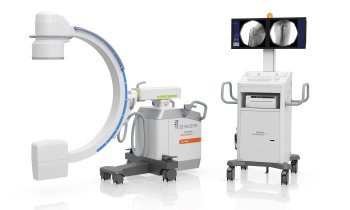© abhijith3747 – stock.adobe.com
News • Cholecystectomy
Gallstones and abdominal pain: Surgery not always the best option
Abdominal pain associated with gallstones does not always subside after the gallbladder is removed (cholecystectomy).
Even five years after surgery, one-third of patients still experience persisting abdominal pain. Additionally, some patients who do not undergo a cholecystectomy continue to have pain. These symptoms may be caused not only by the presence of gallstones but also by dyspepsia issues or irritable bowel syndrome. Better selection criteria for surgery are needed, according to researchers from Radboud University Medical Center (UMC) in a scientific publication in the journal JAMA Surgery.
More than a third of patients with gallstones also have symptoms of dyspepsia and irritable bowel syndrome. In those cases, this surgery is not helpful
Philip de Reuver
Each year, 100,000 people visit their doctor with abdominal pain, with approximately 30,000 of them diagnosed with gallstones. The standard treatment for these patients is a laparoscopic cholecystectomy. Since the 1990s, the number of surgeries has increased exponentially, despite the lack of clear international criteria. As a result, gallbladder removal is one of the most common surgeries in the Netherlands, yet it is not always effective against pain: about one-third of patients continue to experience abdominal pain after cholecystectomy. The procedure has long been an example of inappropriate care, but this is now changing.
In a 2019 study conducted by Radboud university medical center, patients with abdominal pain due to gallstones were divided into two groups. One group received the standard treatment of cholecystectomy, while the other group received a restrictive selection strategy, with surgery considered only after evaluating various pain symptoms. The number of surgeries in the restrictive strategy group decreased, but one year later, one-third of patients in both groups still had abdominal pain. Based on this study, researchers recommended caution with cholecystectomy in patients with gallstones and abdominal pain.

Image source: Radboudumc
The researchers re-evaluated the patients five years later. The results of this study conducted in 24 Dutch hospitals are now published in JAMA Surgery. Daan Comes, physician-researcher and lead author, explained: ‘We wanted to investigate the long-term effects of a restrictive strategy to this surgery in this group of patients. Therefore, we contacted over a thousand patients by phone. They completed questionnaires, and we reviewed their medical records.’
What did they find? The number of patients with pain had not decreased over the years: still, only two-thirds of the patients were pain-free. However, therestrictive strategy approach led to fewer unnecessary cholecystectomies. ‘In the restrictive selection group, we did not observe more complications from gallstones or surgery than in the other group. It seems that a restrictive selection strategy is feasible, but only for the right patients.’
For better insight into identifying the right patient group, Radboudumc developed a decision rule in 2021 based on scientific research and patient data. Surgeon and principal investigator Philip de Reuver stated, ‘It was found that intense, episodic pain is a strong indication for surgery. Additionally, a previous abdominal surgery or the presence of other symptoms, such as bloating, heartburn, and persistent pain, are reasons to be cautious about surgery.’ With this knowledge, doctors and patients can make better-informed decisions. ‘Patients with recurrent biliary colic certainly benefit from this surgery. However, more than a third of patients with gallstones also have symptoms of dyspepsia and irritable bowel syndrome. In those cases, this surgery is not helpful. We should really rule out these conditions before proceeding with a cholecystectomy.’
Therefore, De Reuver is starting a follow-up study on the effect of a lifestyle intervention in patients with abdominal pain and gallstones, where the decision rule indicates that surgery would have limited benefits. He expects the lifestyle intervention to improve patients' health, quality of life, and reduce pain. ‘In the Netherlands, about 65 patients undergo gallbladder surgery every day. That’s a full bus. If we can reduce that number, we save costs and capacity while maintaining the quality of life. That’s fantastic,’ said De Reuver.
Source: Radboud University Medical Center
26.08.2024











